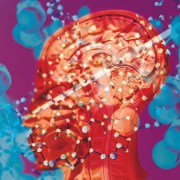When a person has an aneurysm, the wall of a blood vessel either balloons or bulges out, due to a weakened area in the wall. About 5 percent of people have an aneurysm in the brain, according to MedlinePlus, though only a small number of people either experience symptoms from the brain aneurysm putting pressure on nearby tissue or have a rupture.
The number of people each year who have a ruptured brain aneurysm is about 27,000, noted the National Institute of Neurological Disorders and Stroke.
A ruptured brain aneurysm is a serious health concern and can be life-threatening. About 25 percent of patients die within a day of the rupture and an additional 25 percent of patients die within three months of a rupture, according to MedlinePlus.
When the brain aneurysm ruptures, it results in bleeding in the brain — a hemorrhagic stroke. This bleeding in the brain can damage brain cells. While bleeding occurs when the aneurysm ruptures, it may occur again later. The MayoClinic.com notes that a ruptured or even leaking brain aneurysm has a risk of causing bleeding again, resulting in further damage to brain cells.
The rupture of the cerebral aneurysm puts a patient at risk for another type of stroke: ischemic stroke. This may happen if vasospasm — in which the blood vessels narrow erratically — occurs after the rupture. With the blood vessels in the brain narrowing, it affects the amount of blood reaching the brain cells. If blood cannot reach the brain cells, then the cells do not get the oxygen they need, resulting in cell death.
The MayoClinic.com noted that in many cases, the rupture of the cerebral aneurysm occurs in the space between the brain and the tissues that cover it — a condition called a subarachnoid hemorrhage. A subarachnoid hemorrhage may result in two complications: hydrocephalus and hyponatremia.
With hydrocephalus, the blood blocks the circulation of the cerebrospinal fluid, resulting in a build-up that puts pressure on the brain. With hyponatremia, the subarachnoid hemorrhage affects the level of sodium in the blood supply, which can cause swelling of the brain cells. Both conditions can result in damage to the brain.
A ruptured brain aneurysm may cause other complications. For example, some patients may have seizures, in which there is abnormal electrical activity in the brain, resulting in behavioral changes or physical reactions. About 25 percent of patients who survive a ruptured cerebral aneurysm have a permanent disability, according to MedlinePlus.
Some people may lose sensation in a part of the body or face. Loss of movement is also possible, and may affect one of more areas of the patient’s body.
References
National Institute of Neurological Disorders and Stroke. Cerebral Aneurysms Fact Sheet. Web. 14 December 2011
http://www.ninds.nih.gov/disorders/cerebral_aneurysm/detail_cerebral_aneurysms.htm
MayoClinic.com. Brain Aneurysm. Web. 14 December 2011
http://www.mayoclinic.com/health/brain-aneurysm/DS00582/METHOD=print
MedlinePlus Medical Encyclopedia. Aneurysm in the Brain. Web. 14 December 2011
http://www.nlm.nih.gov/medlineplus/ency/article/001414.htm
Reviewed December 15, 2011
by Michele Blacksberg RN
Edited by Jody Smith




Add a CommentComments
There are no comments yet. Be the first one and get the conversation started!